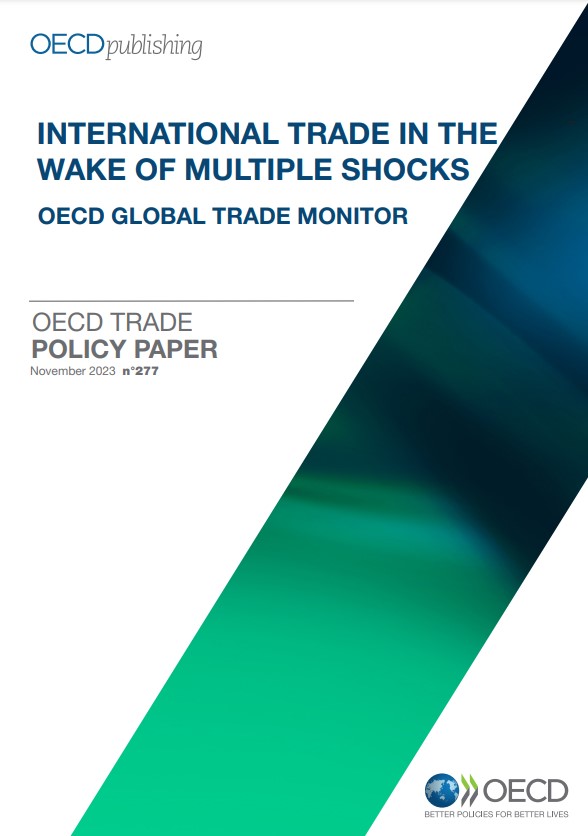
목차
Title page
Contents
Acknowledgements 2
Executive Summary 5
1. Introduction 6
2. The pace of trade recovery is slowing 6
2.1. Expectations for global trade growth in 2023 are tempered 7
2.2. China's reopening is slower than expected 8
3. The global merchandise trade slowdown is contributing to declining freight costs 9
3.1. Container supply is catching up with demand 9
3.2. Dry bulk prices are returning to pre-pandemic levels, but high grain freight costs affected consumer food prices in 2022 10
3.3. Following two unusual years, 2022 Air freight capacities and demand are returning to 2019 levels 12
4. The structure of merchandise trade continues to evolve 14
4.1. The product structure of goods trade has not returned to its pre-pandemic composition 14
4.2. Data to date do not indicate significant evidence of reshoring or friendshoring 17
4.3. COVID and Russia's war in Ukraine are causing some changes in trade patterns 18
5. Russia's trade is changing as the war continues 20
5.1. Russia's trade flows are seeing massive adjustments 20
5.2. Oil and gas markets are adjusting 25
6. Commodities markets are calming down 26
6.1. Energy markets 27
6.2. Food and fertiliser 27
6.3. Metals 30
7. Conclusion 31
References 32
Figure 1. World merchandise and services trade 7
Figure 2. China's exports are lower than expected 8
Figure 3. Year-on-year growth rates 2019-2023 9
Figure 4. Weekly world container index 10
Figure 5. Evolution of the Baltic Dry Index (BDI) and of the IGC Grains and Oilseeds Freight Index (GOFI) 11
Figure 6. Grains and Oilseeds exports for main exporters 12
Figure 7. Weekly Baltic Airfreight Index (BAI) 13
Figure 8. Global air cargo volumes and capacities growth 13
Figure 9. Changes in the structure of goods and services trade as of the end of 2022 15
Figure 10. Goods and services with largest gains and losses in G7 and China's export shares 16
Figure 11. Physical distance of imports has increased but the geopolitical distance has been stable 18
Figure 12. The structure of trade reflects responses to global events in recent years 19
Figure 13. Russian exports are shifting destination 21
Figure 14. Russian imports fell and their origin shifted in 2022 22
Figure 15. Russian merchandise imports from the G7 took a strong hit, with differences across products 23
Figure 16. Product targeted by G7 measures witnessed the largest fall in exports to Russia 24
Figure 17. Some members of the Eurasian Customs Union have seen imports increase 25
Figure 18. After a surge in 2021-2022 commodity prices are declining, but remain high 26
Figure 19. Energy commodities 27
Figure 20. Food and fertiliser prices 28
Figure 21. Food prices, while now declining, remain high 29
Figure 22. FAO All rice price index 29
Figure 23. Metal and mineral prices 30
해시태그
관련자료
AI 100자 요약·번역서비스
인공지능이 자동으로 요약·번역한 내용입니다.
International trade in the wake of multiple shocks : OECD global trade monitor
(다양한 충격에 따른 국제 무역 : OECD 글로벌 무역 모니터)



